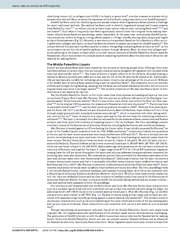File:Non-destructive ZooMS identification reveals strategic bone tool raw material selection by Neandertals.pdf
Appearance

Size of this JPG preview of this PDF file: 456 × 600 pixels. Other resolutions: 182 × 240 pixels | 365 × 480 pixels | 584 × 768 pixels | 1,239 × 1,629 pixels.
Original file (1,239 × 1,629 pixels, file size: 1.58 MB, MIME type: application/pdf, 12 pages)
File history
Click on a date/time to view the file as it appeared at that time.
| Date/Time | Thumbnail | Dimensions | User | Comment | |
|---|---|---|---|---|---|
| current | 09:12, 15 May 2020 |  | 1,239 × 1,629, 12 pages (1.58 MB) | Acagastya | Uploaded a work by Naomi L. Martisius, Frido Welker, Tamara Dogandžić, Mark N. Grote, William Rendu, Virginie Sinet-Mathiot, Arndt Wilcke, Shannon J. P. McPherron, Marie Soressi & Teresa E. Steele from {{url|https://www.nature.com/articles/s41598-020-64358-w|nature.com}} with UploadWizard |
File usage
No pages on the English Wikinews link to this file. Pages on other Wikimedia projects are not listed here.

